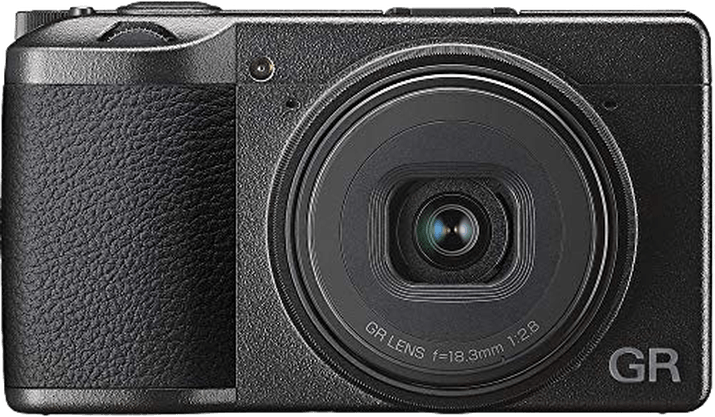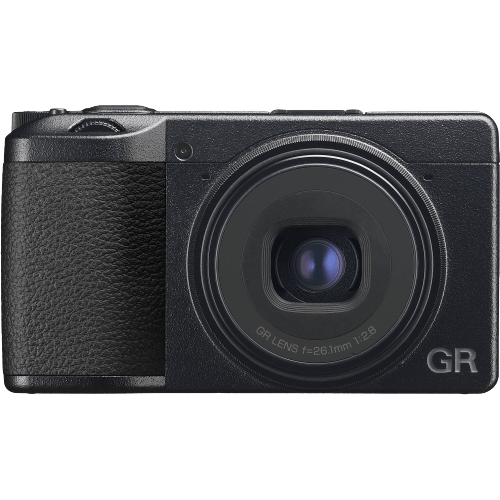Ricoh GR III vs GR IIIx Comparison
Ricoh GR III

Ricoh GR IIIx

The Ricoh GR III and Ricoh GR IIIx have achieved the same score of 66 out of 100. These cameras share common specifications such as camera type, announcement date, and launch price. The GR III was released in 2018 with a launch price of $899, while the GR IIIx was released in 2021 with a launch price of $999.
The Ricoh GR IIIx has a slight advantage in terms of camera size, measuring 109 x 62 x 35mm compared to the GR III’s 109 x 62 x 33mm. However, this comes at a cost of a slightly heavier weight of 262g (0.58lbs) compared to the GR III’s 257g (0.57lbs).
There are no specific advantages for the GR III, but it is worth noting that it is less expensive and slightly lighter than the GR IIIx.
Considering the similar scores and specifications, the choice between the Ricoh GR III and Ricoh GR IIIx comes down to personal preference. While the GR IIIx has a slightly larger size, it is also slightly heavier and more expensive. The GR III, on the other hand, offers a more affordable and lighter option.
Ricoh GR III vs GR IIIx Overview and Optics
The Ricoh GR III and Ricoh GR IIIx both have an optics score of 68/100, showing that they perform similarly in this aspect. They share several specifications, including a 24-megapixel CMOS sensor, 4 fps shooting speed, GR Engine 6 processor, a DXOMARK sensor score of 76, APS-C sensor size, and image stabilization. Additionally, both cameras use a fixed lens mount, meaning the lens cannot be changed.
Despite having the same optics score, the Ricoh GR III has some advantages over the GR IIIx. The GR III is known for its compact size and lightweight design, which makes it a popular choice among street photographers and those who prioritize portability. Its fixed lens is also known for its sharpness and ability to capture high-quality images in various lighting conditions.
On the other hand, the Ricoh GR IIIx also has its strengths. Although it has the same score as the GR III, the GR IIIx features a slightly longer focal length, which provides more versatility in framing and composition. This can be an advantage for photographers who want to capture subjects from a greater distance or achieve a different perspective.
In comparing the Ricoh GR III and GR IIIx, it is clear that both cameras have their own strengths and are well-suited for different photography styles. The GR III offers a compact and lightweight design, while the GR IIIx provides a longer focal length for more versatility. Ultimately, the choice between these two cameras depends on the photographer’s needs and preferences.
Ricoh GR III vs GR IIIx Video Performance
The Ricoh GR III and Ricoh GR IIIx both have identical video capabilities, earning a score of 70/100 in this category. This means that neither camera outperforms the other in terms of video performance. Both cameras share common specifications for video, which include Full HD maximum video resolution, 1920 x 1080 maximum video dimensions, a maximum frame rate of 60fps, and built-in time-lapse functionality.
The Ricoh GR III excels in the same areas as the Ricoh GR IIIx, as their video specifications are identical. Both cameras provide users with high-quality Full HD video resolution and smooth footage with their 60fps frame rate. The built-in time-lapse feature is also a notable advantage for both cameras, allowing users to create visually appealing time-lapse videos without needing additional equipment or software.
On the other hand, there are no areas where the Ricoh GR III is better than the Ricoh GR IIIx or vice versa, as their video capabilities are the same. Both cameras offer users the same level of performance and features in terms of video recording.
Considering the video capabilities of both cameras, it is evident that there is no clear winner between the Ricoh GR III and Ricoh GR IIIx. Both cameras provide users with the same level of performance and features for video recording. This makes them equally suitable for users looking for a camera with reliable and high-quality video capabilities.
Ricoh GR III vs GR IIIx Features and Benefits
The Ricoh GR III and Ricoh GR IIIx both have a feature score of 70/100, showing that they are evenly matched in this aspect. Both cameras share several specifications, such as a 3-inch screen size and a screen resolution of 1,037,000 dots. They both have touchscreens, but neither has a flip screen. Additionally, neither camera has GPS, but both have Wi-Fi and Bluetooth connectivity.
Despite the identical feature scores, there are areas where each camera excels. The Ricoh GR IIIx is the superior camera due to its longer focal length, offering greater flexibility for various shooting scenarios. Its 40mm equivalent lens allows users to capture more detailed and intimate images, making it a better choice for those who value versatility in their photography.
On the other hand, the Ricoh GR III has a wider 28mm equivalent lens, which is better suited for landscape and street photography, capturing wider scenes with ease. This advantage makes the GR III a better choice for photographers who primarily focus on these genres.
When comparing the Ricoh GR III and Ricoh GR IIIx, it becomes clear that each camera has its strengths, and the choice between them depends on the specific needs and preferences of the user. The GR IIIx offers greater flexibility with its longer focal length, while the GR III excels in capturing wide scenes. In the end, both cameras are strong contenders in their respective areas, and users should weigh their personal requirements before making a decision.
Ricoh GR III vs GR IIIx Storage and Battery
The Ricoh GR III and Ricoh GR IIIx both score 27/100 in terms of storage and battery. They share the same specifications in this aspect, with each camera having one memory card slot, accepting SD, SDHC, and SDXC (UHS-I compatible) cards, as well as offering internal storage. Both cameras have a battery life of 200 shots, using the same DB-110 battery type. Additionally, both models support USB charging.
Neither camera outperforms the other in storage and battery capabilities, as they have identical scores and specifications. This equality means that potential buyers can focus on other factors when deciding between the two models. The Ricoh GR III and Ricoh GR IIIx both provide sufficient storage options and battery life for casual photographers, but those requiring more extensive capabilities may need to look elsewhere or consider additional accessories.
Ricoh GR III vs GR IIIx Alternatives
Still not sure which camera is best for you? Check out these popular camera comparisons for inspiration:
